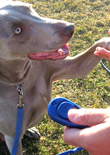
Has Clickertraining Revolutionized the Dog Training World?
By Sally Gutteridge | Posts , Training
 Today, clickertraining is used as a popular, effective, and gentle training method for dogs. However, operant conditioning – the process of training any animal with a clicking mechanism – has been used as a positive reinforcement training tool since World War II by B.F. Skinner.1
Today, clickertraining is used as a popular, effective, and gentle training method for dogs. However, operant conditioning – the process of training any animal with a clicking mechanism – has been used as a positive reinforcement training tool since World War II by B.F. Skinner.1
The training method uses a perceived signal in a consistent pattern so that an animal can repeat their behavior or learn a trick through positive reinforcement. Although this training method is popular with dogs today, it has been used with dolphins, birds, and even goldfish by substituting a whistle or a flashlight for a traditional clicker. Even deaf dogs can use clickertraining with a vibrating collar.
Today, one of the leaders in clickertraining is Karen Pryor, who has helped to introduce the training method to the dog training world. Pryor is a scientist in both behavioral psychology and marine biology and has practiced operant conditioning by working hands-on as a dolphin trainer in the 1960s.
Pryor emphasizes that the importance of clickertraining for dogs is to provide a modern animal training method that does not use force or punishment.
The History of Clickertraining
According to clickertraining expert Pryor, clickertraining for dogs is an application of behavioral analysis that was developed close to 50 years ago by Keller Breland and Marian Breland Bailey, students of B.F. Skinner.2
Clickertraining first became popularized to train marine mammals using a whistle. The methodology was not made known to the general public until the early 90s when Pryor hosted the first Don’t Shoot the Dog! seminar for clickertraining. At that time, there was not a single dog trainer using clickertraining. However, today, thanks to the innovations of Pryor, over 10,000 dog trainers now rely on clickertraining as a primary training tool.
There are three main reasons that the technology of clickertraining has spread so rapidly in the dog training community:
- It is easy.
- It has visible benefits.
- It can be learned and utilized by anyone.
This means that expert dog trainers and everyday dog owners alike can use clickertraining to teach their dogs tricks and reinforce good behavior. For the many people that believe that their dogs are not smart or capable enough to learn tricks, clickertraining makes a significant impact and changes even the most disobedient dogs’ behaviors dramatically.
Sources:
- “Clickertraining – Wikipedia, the free encyclopedia.” Wikipedia, the free encyclopedia. N.p., n.d. Web. 28 Nov. 2011.
- “History of Clickertraining I | Karen Pryor Clickertraining.” Karen Pryor Clickertraining . N.p., n.d. Web. 28 Nov. 2011


 There are a number of different ways to approach training your puppy. If you have already tried harsher methods to manage behavior, like choke chains or shock collars, you may have seen a small degree of success. But you may have also noticed that your dog became frightened, anxious, and even angry during the training sessions.
There are a number of different ways to approach training your puppy. If you have already tried harsher methods to manage behavior, like choke chains or shock collars, you may have seen a small degree of success. But you may have also noticed that your dog became frightened, anxious, and even angry during the training sessions.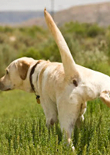
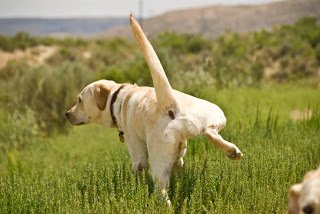
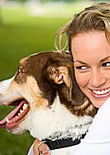
 Obedience training can sometimes be overwhelming when you get a new dog. Most people think that they can train their dog themselves and some are successful while others struggle. But in reality, everyone can have a well behaved and loving family dog in only 8 short weeks.
Obedience training can sometimes be overwhelming when you get a new dog. Most people think that they can train their dog themselves and some are successful while others struggle. But in reality, everyone can have a well behaved and loving family dog in only 8 short weeks.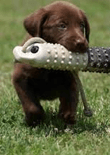
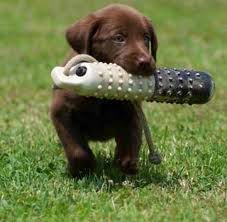 If you have just brought a new puppy home for the first time, it may be tempting to cuddle, spoil, and shower your adorable puppy with affection. But just as important as love and affection, is taking the time to train your puppy from a young age so that he can learn good behaviors that will stick with him for the rest of his life.
If you have just brought a new puppy home for the first time, it may be tempting to cuddle, spoil, and shower your adorable puppy with affection. But just as important as love and affection, is taking the time to train your puppy from a young age so that he can learn good behaviors that will stick with him for the rest of his life.
 The best dog training tactic to use with your puppy or adult dog is positive reinforcement and motivation. Once your dog begins to understand that he will be rewarded for obedience and good behavior, he will instinctively want to please you to earn praise or another treat.
The best dog training tactic to use with your puppy or adult dog is positive reinforcement and motivation. Once your dog begins to understand that he will be rewarded for obedience and good behavior, he will instinctively want to please you to earn praise or another treat.
 Formal obedience training for dogs normally occurs in a class or with a private trainer in a one-on-one setting. Obedience training for dogs begins with very basic obedience training, including teaching the dog to respond to such common commands as “sit”, “come”, “down”, and “stay”.
Formal obedience training for dogs normally occurs in a class or with a private trainer in a one-on-one setting. Obedience training for dogs begins with very basic obedience training, including teaching the dog to respond to such common commands as “sit”, “come”, “down”, and “stay”.
 Dog crate training doesn’t have to be an overwhelming or even frustrating task. When you use the right methods, you can successfully crate train your dog without using force or punishment.
Dog crate training doesn’t have to be an overwhelming or even frustrating task. When you use the right methods, you can successfully crate train your dog without using force or punishment.
 Taking your dog for a walk on a leash shouldn’t mean that your dog is pulling you down the block! Proper leash training will make walking your dog on a day-to-day basis a pleasant experience. As your dog learns how to walk obediently on a leash, he will remain by your side at all times without any tension or pulling.
Taking your dog for a walk on a leash shouldn’t mean that your dog is pulling you down the block! Proper leash training will make walking your dog on a day-to-day basis a pleasant experience. As your dog learns how to walk obediently on a leash, he will remain by your side at all times without any tension or pulling.
 Nonstop dog barking is enough to drive any pet owner insane. If you’re at the end of your rope and can’t seem to stop your dog from barking any time that he meets a new person or that the doorbell rings, it may be time to consider how to stop dog barking using technology.
Nonstop dog barking is enough to drive any pet owner insane. If you’re at the end of your rope and can’t seem to stop your dog from barking any time that he meets a new person or that the doorbell rings, it may be time to consider how to stop dog barking using technology.